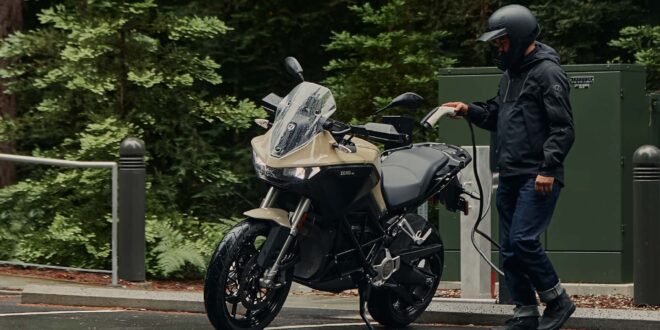The Electric Revolution in Powersports
The electric revolution is well underway in the world of cars, but for motorcycles, ATVs, and other powersports machines, it’s been a slower and more complicated transition. Current lithium-ion battery technology works, but it comes with trade-offs, as weight, limited range, long charging times, and thermal challenges become more noticeable the further you push performance and versatility.
That’s where solid-state batteries come in. In theory, this technology could resolve many of the issues holding back widespread electrification in two-wheeled and off-road applications. Solid-state cells replace the liquid electrolyte found in traditional lithium-ion batteries with a solid material, usually ceramic or sulfide-based. This change brings several potential benefits: higher energy density, improved safety, and faster charging capabilities.
In a powersports context, this could be transformative. Weight matters more on a motorcycle than it does in a car. Shedding bulk from a battery pack would improve handling and overall ride feel. Higher energy density means longer range without needing a physically larger battery. And faster charging reduces downtime, which is especially critical in motorsports, long-distance touring, or remote off-road riding where charging infrastructure is sparse.
Imagine an electric dirt bike that feels as agile as a gas-powered one but can still handle a full day of trail riding on a single charge. Or an electric sportbike with enough range for back-to-back sessions on a racetrack without significant charging delays. In motorsport, where every second counts, solid-state tech could unlock performance and logistics advantages that current EV platforms struggle to deliver.
Challenges and Opportunities
But for now, the tech remains in development. Major automakers like Toyota, BMW, Mercedes-Benz, Nissan, and Stellantis have announced plans to bring semi-solid or fully solid-state batteries to market by 2027 or 2028. That timeline applies mostly to cars, and motorcycles are likely to follow later, depending on how scalable and cost-effective the technology proves to be.
Some companies in the powersports space have already started laying the groundwork. Brands like Zero, Energica, and KTM have shown serious interest in high-performance electrification, but they’re still relying on conventional lithium-ion packs. Integrating solid-state cells would require major redesigns, both in hardware and in how energy is managed and cooled.
There’s also the question of whether the tech will be necessary by the time it’s ready. Lithium-ion technology is evolving quickly. Companies like CATL and BYD have both announced ultra-fast-charging LFP batteries capable of adding hundreds of miles of range in a matter of minutes. These advances could meet most users’ needs without requiring a major leap to solid-state—especially in the powersports segment, where range demands are typically lower than in passenger cars.
Still, the potential upside is hard to ignore. If solid-state batteries reach commercial viability, they could represent a major leap forward for electric motorcycles and off-road vehicles. Better packaging, less heat risk, quicker turnaround times, and more usable range—all things that would improve real-world usability and open new doors for electric performance.
Looking Ahead
Until then, solid-state tech remains something to watch. The road to adoption might take time, but for the powersports world, it could be the missing piece that pushes electrification from niche to norm.
As the industry continues to evolve, it’s clear that the future of powersports is electric. Whether it’s through solid-state batteries or continued advancements in lithium-ion technology, the goal remains the same: to create vehicles that are powerful, efficient, and enjoyable to ride. The next few years will be crucial in determining which technologies ultimately shape the landscape of electric powersports.
 Info Malang Raya Its All About World News
Info Malang Raya Its All About World News



